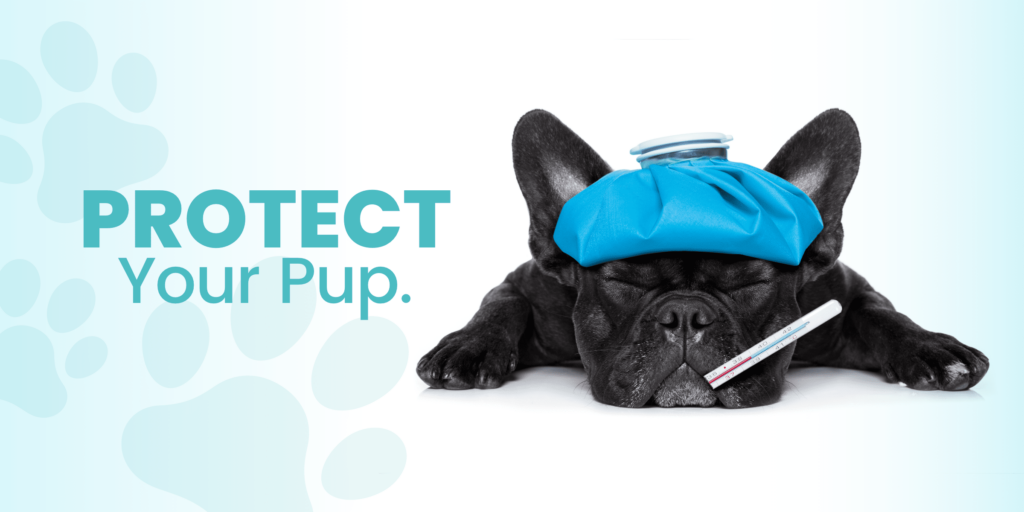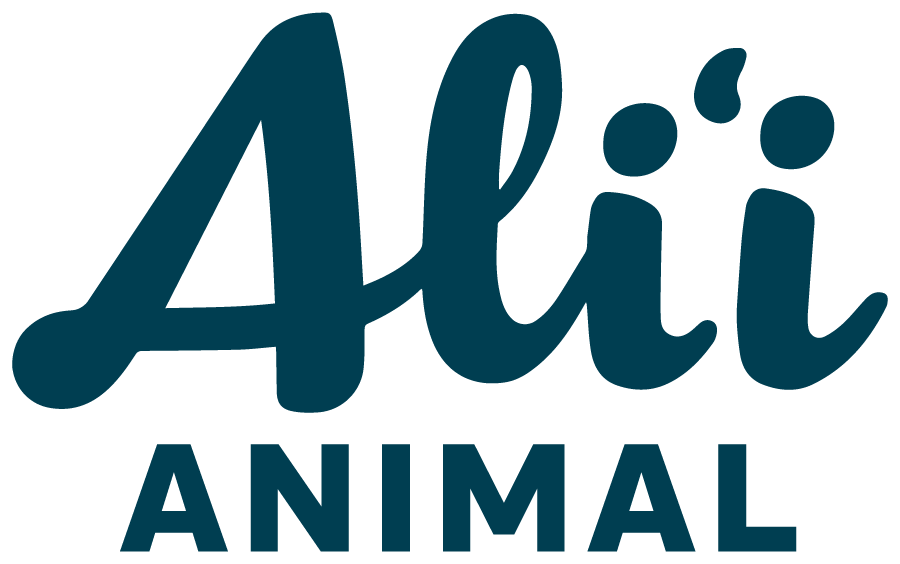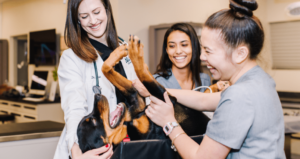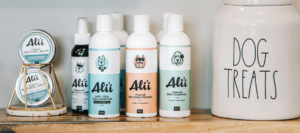
Protect your dog by learning about five toxic threats to your pet, their symptoms, and how to prevent common forms of pet poisoning.
One minute you and your pet are enjoying the sun, sand, and waves, and the next your dog is sick with poisoning. If you’re not careful, your puppy can get into toxic substances, leading to a rollercoaster of problems. You know the obvious dangers: rat poison, chemicals, and anti-inflammatory medications. But what else could be making your dog sick?
Since the goal is effective treatment, we need to find the root of the issue. We’re going to identify five of the most common toxic substances. But first, these are three things to consider when faced with dog poisoning: exposure, diagnosis, and treatment.
WAYS YOUR DOG COULD BE EXPOSED
Unfortunately, harmful substances like medication, plants, and food can look tasty to dogs. Sometimes a canine will even ingest inedible objects. The amount or size of the object ingested will impact the severity of poisoning.
While some sources of contamination may be obvious, others may not. It can be hard to determine the source of poisoning. As soon as you notice a change in your dog’s behavior, look for hazards that your dog could’ve come into contact with.
Envenomation is another form of poison exposure caused by a bite or sting. Animals like toads, marine life, spiders, and snakes are notorious for their defense mechanisms that can carry toxins. These fangs and barbs cause injuries that are life-threatening to your pet. Local hazards include bufo toads, centipedes, and Portuguese man-o-war jellyfish.
SYMPTOMS THAT HELP WITH THE DIAGNOSIS OF POISONING IN DOGS
Think your dog could be showing signs of poisoning? It’s helpful to know the common symptoms and gather as much information as possible. Quickly and calmly collect samples, packaging, or photos of the toxin that remains. Then bring your dog to Alii Animal Hospital & Resort right away! This will help us determine the most effective course of treatment for your pup.
Symptoms of poisoning can progress rapidly, so it’s important to identify them early. We’ve included some of the most common signs to look out for:
- Vomiting and diarrhea
- Lethargy
- Excessive drooling or foaming at the mouth
- Loss of appetite
- Irregular heart rate
- Muscle tremors or seizures
- Discolored gums
- Trouble breathing or excessive panting
ACTION STEPS FOR EFFECTIVE TREATMENT
As soon as you notice these symptoms or see your pet with a poisonous substance, treat it as a medical emergency. Call Alii Animal and the ASPCA Animal Poison Control Center at (888) 426-4435 immediately. The sooner they’re seen, the better the chance they’ll recover successfully. We offer urgent care and same-day appointments to provide emergency care when needed.
Never treat your animal with a home remedy without consulting a veterinary professional. It may not be safe and can create further medical issues. Only induce vomiting if you’re instructed to do so. Let your vet know if your dog is unconscious, having trouble breathing, or showing signs of serious distress. Don’t attempt to induce vomiting if any of these signs are present.
If the toxin is ingested, your vet may instruct you to rinse out your dog’s mouth using a wet washcloth. Do your best to clean the teeth, gums, and tongue. Avoid using a powerful hose unless advised by your veterinarian. Inhaling water into the lungs can cause “aspiration pneumonia,” a life-threatening condition.
If the contamination is topical, your vet may recommend you bathe your dog. Along with regular dog shampoo, keep Dawn dish soap handy. When advised, you can use it to bathe your dog as an effective grease-cutting cleaner.
THE TREAT YOU SHOULD NEVER GIVE YOUR DOG: CHOCOLATE
Chocolate is one of the most well-known foods that are toxic to dogs. But why is it so bad for our furry friends, and what do you do if your dog eats chocolate? While it may be the perfect treat for you, the ingredients don’t settle well with canines. Chocolate contains theobromine and caffeine. These compounds metabolize slowly in dogs, speeding the heart rate and stimulating the nervous system.
As a result, your dog may experience anything from an upset stomach, vomiting, and diarrhea to the following:
- Seizures
- Tremors
- Irregular heart rate
- Internal bleeding
- Death
Treatment varies depending on the amount of chocolate eaten, how long it’s been in your dog’s system and the size of your dog. Knowing these details and the type of chocolate helps your veterinarian advise you on the best course of action. You can get an idea of the danger your pet is in with the chocolate toxicity meter by Merck Veterinary Manual.
Once you bring your pet in, your vet will start the decontamination process. We’ll support your pup through intravenous (IV) fluids and medications. That might include anti-nausea, anti-diarrhea, or anti-seizure medications. Dogs experiencing severe chocolate toxicity may need to be hospitalized and continually monitored.
AN UNEXPECTED THREAT TO PETS: TOADS
Toads, a lesser-known threat to canines, produce a dangerous venom. The most toxic species is the Rhinella marina (formerly Bufo marinus). Hawaii’s warm weather creates the perfect climate for many toads year-round, including the Bufo. These toads are most prevalent in early spring and during the rainy season. The islands’ dogs, and sometimes cats, find themselves the victim of these large toads.
Their venom contains hallucinogenic and cardiac toxins. This irritating substance can contaminate your dog in a variety of ways. Your dog doesn’t have to bite the toad to become a victim. And only a small amount of venom is needed to cause a toxic reaction. Poisoning can be caused by:
- Licking the toad
- Ingesting the tadpoles, toad eggs, or a dried out toad
- Chasing or playing with the toad
- Eating food or drinking water that’s come into contact with the toad
Signs of Bufo toad exposure usually show up around 5-15 minutes after contact. If you notice your dog acting unsteady, disoriented, or drooling more than normal after being outside, seek veterinary help. Immediately rinse your dog’s mouth following the directions above. Stick to your veterinarian’s instructions carefully if they recommend using a hose. Then bring him to Alii Animal.
There’s no test to diagnose toad toxicity or an antidote to the venom. So your veterinarian will perform a physical exam to assess your dog’s breathing, heart rate, temperature, and more. Based on their findings, your veterinarian will treat the symptoms. This may include rehydration and medications to ease seizures or tremors and regulate heart rate and breathing.
THE SWEET BUT HOSTILE FRUIT: GRAPES
Grapes and raisins are also known to be highly poisonous to dogs. Never allow your dog to eat grapes or raisins of any kind. That includes any product that may contain this harmful fruit.
Even a small amount of raisins can lead to GI upset, lethargy, or sudden kidney failure. Symptoms will usually present themselves between 12-24 hours after a dog eats a grape.
Bring your puppy to Ali’i Animal Hospital to be fully treated. As part of the decontamination process, your vet may use activated charcoal to absorb the toxin. Expect your dog to be hospitalized for 48 hours to monitor their kidney function and be supported through IV fluid
THE HAZARDS OF THE OCEAN: SALTWATER
Wondering what’s making your dog sick after going to the beach? Several mouthfuls of saltwater might be the culprit. In the best-case scenario, a little saltwater may cause some diarrhea, but it can be much worse.
Seawater aspiration results from being submerged or taking in too much water. Without the proper safety precautions, while swimming and playing, your dog could be at risk. Take them to our emergency clinic immediately if you notice difficulty breathing, a change in behavior, or bluish skin and gums.
Also a hazard for dogs, saltwater poisoning happens when too much salt builds up in its body. This sodium imbalance can cause many health issues, including:
- Seizures
- A loss of brain cells
- Injury to the kidneys
- Severe dehydration
This condition can even lead to death if not treated by a medical professional. Your vet will carefully balance your dog’s electrolytes while preventing cerebral edema (fluid on the brain) and swelling. At the same time, we’ll offer supportive care, managing seizures, and other complications as they arise. In an ideal case, your dog will be hospitalized for 2-3 days. But it may be necessary to track your canine for longer depending on the severity.
THE BEACH TUMMY TRAP: SAND
The beach offers prime digging among other opportunities for play. But sand, like saltwater, is another beachfront hazard to be aware of. You may not see your dog flat out eating sand, but a little bit here and there adds up.
So what exactly happens? While playing with their sandy toys, your dog will ingest sand. If there’s enough of it, they’ll be in danger of intestinal sand impaction. As the tiny sand particles get wet and heavy, the result is a solid lump that can block the intestinal tract. Sand impaction causes:
- Vomiting
- A hard mass in the abdominal area
- Stomach pain
- Constipation
- And more
If your dog is suffering from this condition, veterinary intervention is crucial. Your dog will receive a complete examination of its abdomen and may need an ultrasound or x-ray. Often, your dog will experience pain and need medication to manage it. The sandy blockage may not pass without IV fluids, and lifesaving intestinal surgery may be required.
KEEP YOUR DOG SAFE FROM TOXINS WITH EFFECTIVE PREVENTION
Want to know how to help prevent poisoning during your beach visit? Provide shade and plenty of fresh water for your pup. Take a break from the saltwater every 15 minutes. If you notice them drinking ocean water, restrict their access.
Exposure to any of these toxic substances can be fatal and expensive to treat. The best course of action is to always be aware of your dog’s surroundings and prevent them from coming into contact with toxins. Two general ways to prevent poisoning are teaching your dog to “leave it” and crate training your pup.
Just a little knowledge and some prevention can be game-changers and just might save your furry friend’s life.



